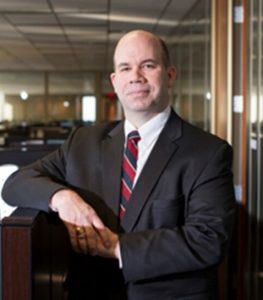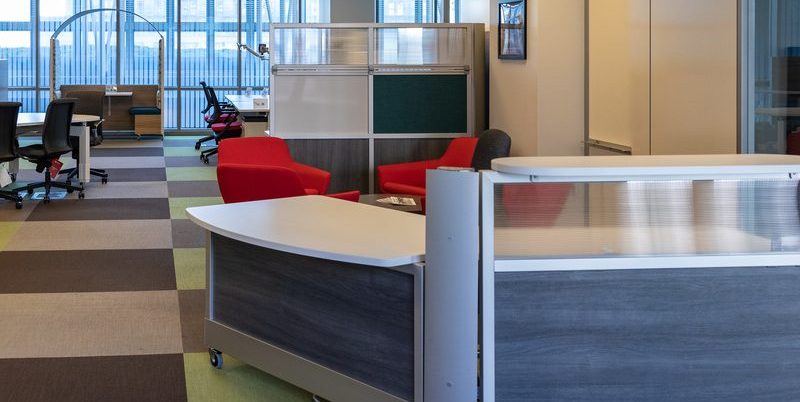Goal: Embrace a more flexible, agile and resilient workplace to accommodate workforce and mission needs.
Charles Hardy, Chief Architect of the General Services Administration’s (GSA) Public Buildings Service, is a licensed architect, workplace strategist and certified construction manager. As the agency’s lead executive in charge of workplace strategy, he oversees research and development of office innovations.

“The future of work isn’t about creating a new type of office,” Hardy said. “Rather, it’s based on an understanding that the nature of work is going to continue to change.”
Open a New Conversation
Since the pandemic, the conversation about workspaces has expanded to more participants — and more options. People have mastered the technology they need to work remotely, the technology itself has matured, and agencies have a much better feel for when an office presence is productive and when it isn’t.
“That conversation now is about what you’re trying to do, what you’re looking to accomplish and how this can manifest in the workplace,” Hardy said. “How can space, technology and HR policies enable mission?”
There is no one right answer, he warned, and no single solution will work indefinitely.
“You’ve got mission changes, you’ve got people coming and going, you’ve got leases expiring — all those things make it an ecosystem that’s continually changing,” Hardy said. “How do you create a solution that is efficient, effective, resilient, changeable and flexible?”
Offer a Curated Choice
“The biggest question about the workplace at the moment is, ‘How many people are going to come back to the office?’” Hardy said.
Offices are “not going away… [but] they need to have planned adaptability. The right mix of in-person and virtual work will vary significantly depending on the type of work that’s being accomplished, the location, the technology, the organizational culture, and even information and physical security considerations,” he said.
The key for employees is choice — but not infinite choices. “It’s not ‘whatever you want’, but a curated choice aligned with mission: ‘Here are two or three different things you can pick from. Which one fits your needs?’” Hardy said.
“Since [my team] started testing workplace strategies in 2005, the most significant workplace feature that attracts and retains talent has remained constant. It’s offering that choice,” he said.
Make Office Spaces Flexible
It isn’t just policies that need to be flexible. The physical space itself should offer options for different kinds of work.
“In our Workplace Innovation Lab, we’ve got a kind of a residential/commercial mashup,” Hardy said. “We’ve got a couch and a table and things like that, where you can sit and have meetings. We also have standard workstations and other desks and phone booths for privacy.”
“But we’ve also had groups of 70 people picking up the sofa, … pushing chairs together and creating a forum where 70 people can meet in that same place, and then put it back in place, and everybody goes off on their own to individual [workstations],” he explained.
“That flexibility in the space to change to the need of the day and the mission will be super useful as we go forward,” Hardy said.
Act Now
Hardy’s advice to agencies seeking to become more flexible is simple: Act.
“Do something, and don’t wait for things to settle down,” he said. “If the winds change, we can address that then and move toward wherever we need to move toward. But if you fail to act, you’re stuck in time, and those disruptions become far more impactful as you go forward.”
“Create the proper agile and flexible … and resilient space, [and] you can make those adjustments pretty quickly and pretty easily,” Hardy said.
This article appeared in our guide, “Agencies of the Future: How to Break Down Barriers to Growth.” For more about how governments are embracing change, download it here:




Leave a Reply
You must be logged in to post a comment.